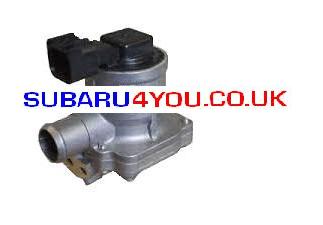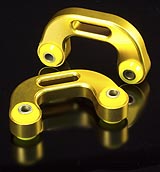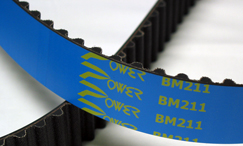
|
 |
|||||
|
|
Parts Department
Subaru Secondary Air Injection System Ring to order or check availability 01635 35355 All prices Exclude VAT @ 20%
Subaru Secondary Air Pump & Secondary Air Valves With a fault on the Secondary Air Injection System the following OBDII codes are possible depending on the make and model:
P1410 Secondary Air Injection System Switching Valve Stuck Open P1444 Secondary Air Injection System Switching Valve Stuck Open P1418 Secondary Air Injection System Control "A" Circuit Shorted P2430 Secondary Air Injection System Air Flow/Press Sensor Circ Bank1 P2431 Secondary Air Injection System Air Flow/Press Sensor Circ Range/Perf Bank1 P2432 Secondary Air Injection System Air Flow/Press Sensor Circ Low Bank1 P2433 Secondary Air Injection System Air Flow/Press Sensor Circ High Bank1 P2434 Secondary Air Injection System Air Flow/Press Sensor Circ Interm/Erratic Bank1 P2435 Secondary Air Injection System Air Flow/Press Sensor Circ Bank2 P2436 Secondary Air Injection System Air Flow/Press Sensor Circ Range/Perf Bank2 P2437 Secondary Air Injection System Air Flow/Press Sensor Circ Low Bank2 P2438 Secondary Air Injection System Air Flow/Press Sensor Circ High Bank2 P2439 Secondary Air Injection System Air Flow/Press Sensor Circ Interm/Eratic Bank2 P2440 Secondary Air Injection System Switching Valve Stuck Open Bank1 P2441 Secondary Air Injection System Switching Valve Stuck Closed Bank1 P2442 Secondary Air Injection System Switching Valve Stuck Open Bank2 P2443 Secondary Air Injection System Switching Valve Stuck Closed Bank2 P2444 Secondary Air Injection System Pump Stuck On Bank1 P2445 Secondary Air Injection System Pump Stuck Off Bank1 P2446 Secondary Air Injection System Pump Stuck On Bank2 P2447 Secondary Air Injection System Pump Stuck Off Bank2 Possible Causes: Short in Air Pump circuit How it works When the engine is cold, on start up and for up to 60 seconds air is injected into the exhaust to clean up the extra-rich exhaust and raises the temperature of the exhaust to bring the catalytic converter to operating temperature quickly. To accelerate the activation of catalyst when warming up the engine, the secondary air injection system pumps the air to the exhaust system by an air pressure pump. The secondary air is supplied by the air pump and it is pumped to the exhaust through the air switching valves (AKA Secondary Air Injection Valves). Open and close movement of the air switching valve is regulated by the Vacuum Switching Valve (VSV).The air pump and the air switching valve are observed by the Engine Control Module (ECM AKA Engine Management System AKA Engine Control Unit AKA ECU) and are used to detect malfunction in this system. The ECM monitors the secondary air injection system and detects the malfunction using a pressure sensor located on the air switching valve. The ECM observes the pressure in the secondary air passage using the pressure sensor located on the air switching valve in the secondary air injection system. The sensor detects an exhaust pressure in the secondary air passage. If the pressure level from the sensor in the Secondary Air Valve (air switching valve) has not reached a certain level despite the ECM turning on the air pump, or if the pressure level exceeds the threshold despite the ECM turning off the air pump, the ECM interprets this as a fault in the secondary air injection system and the code is set. |
|

|















©Subaru 4 you Ltd | Home | Parts | Terms |












